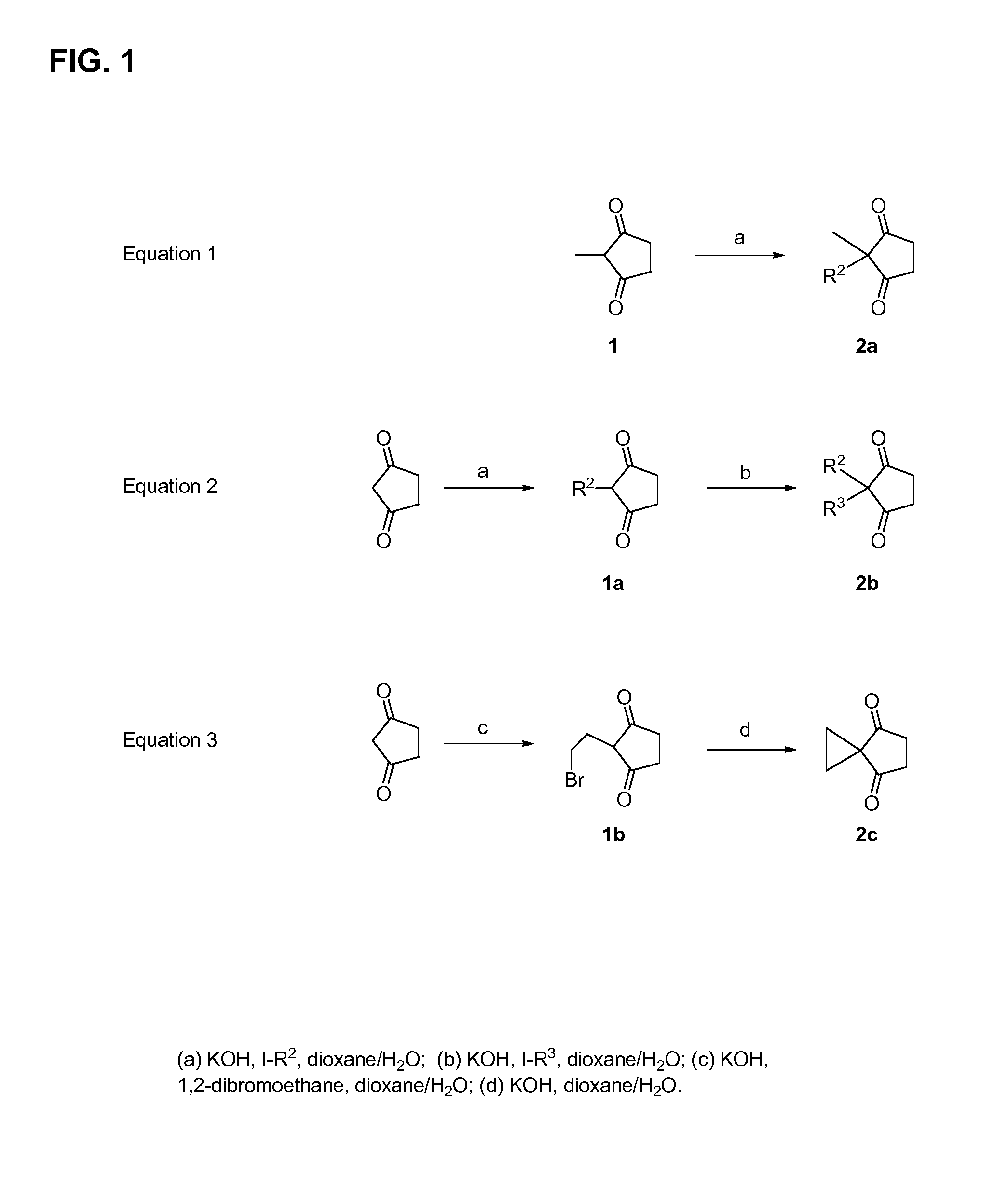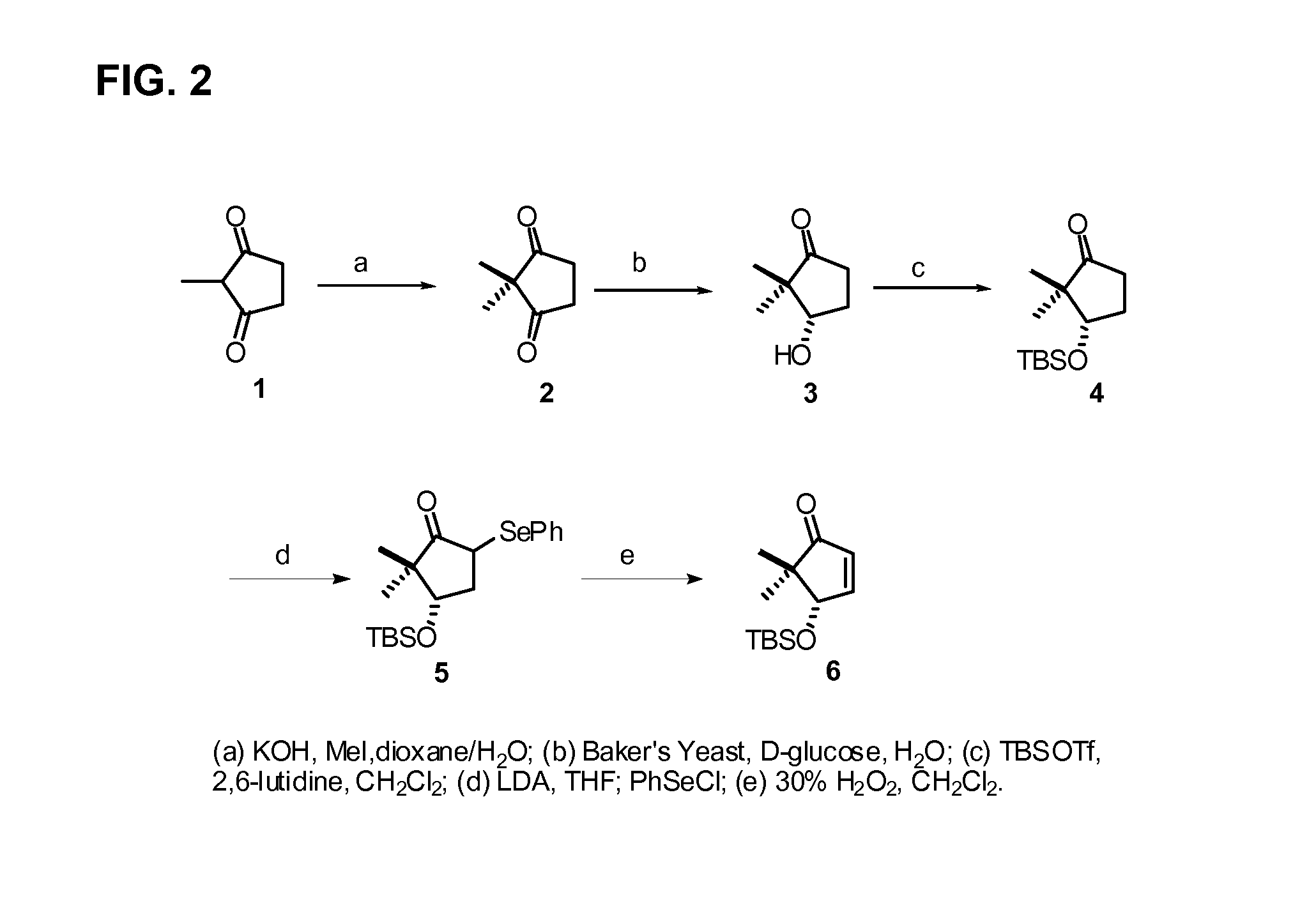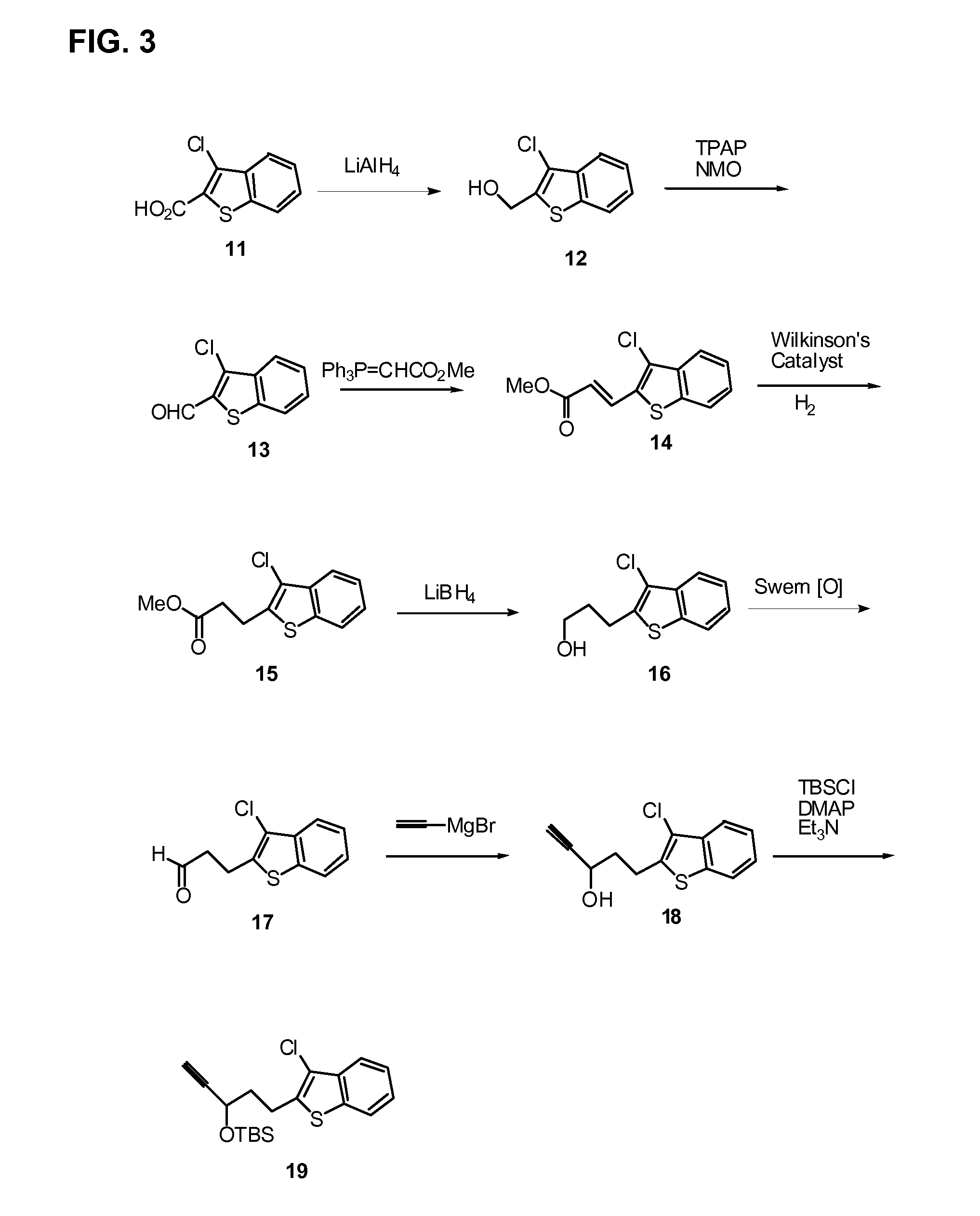Compositions and improved soft tissue replacement methods
a soft tissue replacement and composition technology, applied in the field of compositions and improved soft tissue replacement methods, can solve the problems of inorganic materials lacking any metabolic activity, artificial or alloplastic fillers risking migration and/or extrusion from the implant site, and many of these fillers only produce temporary effects
- Summary
- Abstract
- Description
- Claims
- Application Information
AI Technical Summary
Problems solved by technology
Method used
Image
Examples
example 1
Synthesis of Compounds of Formula I
[0170]This example illustrates the synthesis scheme for the compounds of formula I.
[0171]The methods of preparing the compounds disclosed herein are further illustrated by the following non-limiting examples, which are summarized in the reaction schemes of FIGS. 1-9 wherein the compounds are identified by the same designator in both the Examples and the Figures.
[0172]2-Alkyl-cyclopentane-1,3-dione (1a, FIG. 1). A mixture of 1,3-cyclopentanedione (89.4 mmol, Aldrich), I-R2 (96.4 mmol, Aldrich), and KOH (5.097 g, 90.8 mmol) in water (25 mL) / dioxane (75 mL) was heated at reflux. After 5 hours, a solution of KOH (2 g) and I-R2 (2 mmol) in water (5 mL) / dioxane (15 mL) was added and after another 3 hours at reflux, the solution was stirred at room temperature overnight. A solution of KOH (2 g) and I-R2 (2.4 mmol) in water (5 mL) / dioxane (15 mL) was added to the overnight reaction and heating at reflux. After 4 hours, the mixture was cooled to room temper...
example 2
Compounds of Formula I Promote Synthesis of TGF-β and VEGF
[0211]This example illustrates that compounds of formula I promote formation of blood vessels.
[0212]To test whether the compounds of Formula I promote the formation of blood vessels, and incisional wound model was employed over a 14-day period. Sprague-Dawley rats (180-200 g) were anesthetized, the backs shaved, and a 2-cm long incision was made on the back skin of rats under sterile conditions, reaching the deep fascia. The wound was immediately closed with 4-0 sutures. The animals were topically treated with vehicle or Compound 1 at 0.004% twice daily. The vehicle contains ethanol 30%, propylene glycol 12%, dipropylene glycol 5%, benzyl alcohol 5%, glycerol 3% and normal saline 45%. Biopsy samples of skin wound tissues were analyzed with Western blots day-7 and day-14 post-surgery. Tissue samples about 1 mm thick were taken from both sides of the wound. Protein was extracted, and FGF-2 / VEGF expression was monitored, with We...
example 3
Adipose Tissue Transplant for Breast Defect Correction
[0214]This example illustrates the use of compositions and methods disclosed herein for a breast defect correction.
[0215]A 32-year-old woman presented with complaints that the medial portions of her breast implants were visible, which accentuated the “bony” appearance of her sternum. In addition she felt her breast were too far apart. Pre-operative evaluation of the person includes routine history and physical examination in addition to thorough informed consent disclosing all relevant risks and benefits of the procedure. The physician evaluating the individual determines that she is a candidate for a soft tissue replacement method using the compositions and methods disclosed herein.
[0216]To begin the procedure, adipose tissue is harvested from the woman. The procedure is performed at the individual's bedside. The physician examines the individual's habitus for a suitable site or sites to harvest adipose tissue and selects the la...
PUM
| Property | Measurement | Unit |
|---|---|---|
| Structure | aaaaa | aaaaa |
| Time | aaaaa | aaaaa |
| Biodegradability | aaaaa | aaaaa |
Abstract
Description
Claims
Application Information
 Login to View More
Login to View More - R&D
- Intellectual Property
- Life Sciences
- Materials
- Tech Scout
- Unparalleled Data Quality
- Higher Quality Content
- 60% Fewer Hallucinations
Browse by: Latest US Patents, China's latest patents, Technical Efficacy Thesaurus, Application Domain, Technology Topic, Popular Technical Reports.
© 2025 PatSnap. All rights reserved.Legal|Privacy policy|Modern Slavery Act Transparency Statement|Sitemap|About US| Contact US: help@patsnap.com



